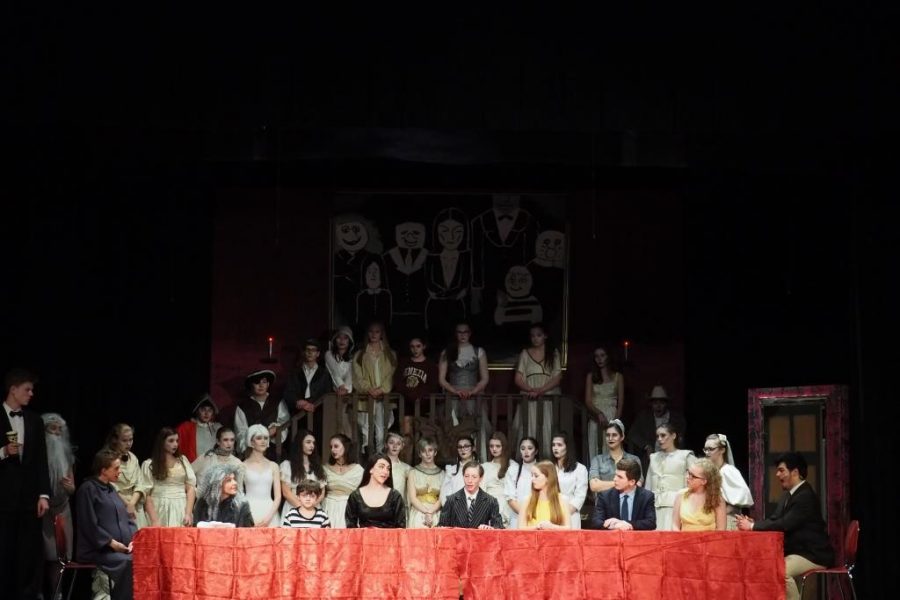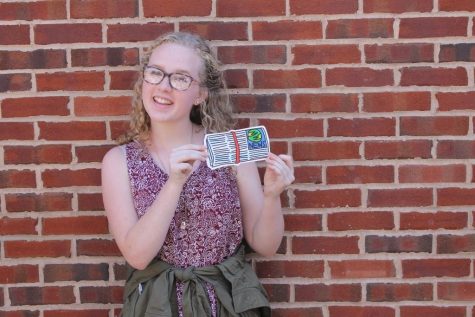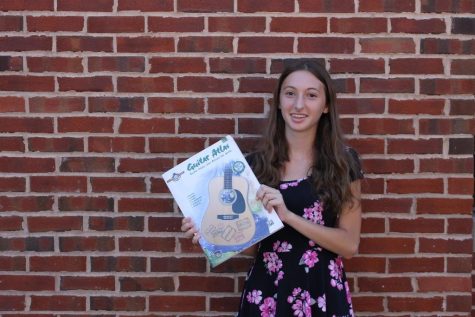Behind the scenes of The Addams Family musical
February 14, 2017
The orchestra began to play the opening notes of the prelude, the bright, red curtains arose, revealing the actors and scenery on stage. Everything looked perfect, with every single prop in its place and every costume looking spotless, or so the audience thought.
Just minutes before, while the public was getting settled in their seats, a storm was passing backstage. The stage crew was running around, setting every prop onto its correct spot, carrying paper trees, and glass potion bottles onto the stage. The costume crew was checking dresses, suits, and vests, making sure every piece fit properly and all accessories were donned.
Many believe that a whole production depends solely on the actors, but in reality without the aid of the crew, it would be impossible for a show to be successful.
This year, Glen Rock High School performed The Addams Family musical. The crew, director, orchestra, and actors were busy with preparations for the first show on Friday, Feb. 10. Everyone put in a lot of hardwork to make sure that the production went well.
Stage crew is in charge of making and painting the sets, creating or purchasing props, and switching sets throughout the show. The tech group helps them by controlling lights and sound during the shoe.
During the show, crew members sit on both sides of the stage, awaiting set changes after specific scenes. Since there are many crew members, not everyone has to help with each set change. They must be attentive and know exactly after which scenes they need to be on stage.
“This show has the most props of any show I’ve been a part of, and it also has a lot of set changes, which can be a little bit stressful,” sophomore and stage crew member Jessica Peiser said.
Most set changes happen in the dark and the crew is responsible for safely moving objects on and off the stage. In some instances, props are moved during a partial blackout in which there is still some light making it much easier to get around without bumping into things.
All of the crew and cast consider themselves to be one big family.
“My favorite part of the whole show is definitely the people. I love all of the other crew kids and the actors,” Peiser said.
There are many departments that are fundamental to the making of the show, along with stage crew. One of these is the costume crew.
The costume crew formulated a plan for dealing with costumes. First, the head of costumes is given a list of characters along with the actor or actress playing them. Then, each member receives a small list of costumes to think of designs for and decide which items they need to buy and which to make.
A few weeks before the show, the costume crew meets and goes shopping for different costume parts at stores such as, Udelco, Value Village, and Party City.
Some of the costumes for the show are rented. Others are made from different pieces of clothing that have been bought or borrowed from actors. Several parts of costumes are even made entirely from scratch.
In total about 15 items had to be made for this show, so each costume crew member was responsible for three. Other costumes had to be rented.
“We shop for the different parts for about a week and then it takes another three to five days to put them together and make alterations. Some costumes can take much longer than others,” costume crew member Sabrina Fried (‘19) said.
According to Fried, it is not necessary to know how to sew to be part of costume crew, but it is helpful when at least one member possesses this skill.
During the shows, crew members wait backstage in case of any costume malfunctions.
Various costumes also require different accessories and parts. This year, the costumes were especially unique because most of the characters were aged and thus the costumes had to be white, cream, or gray colors.
“For these roles we tried to make each costume unique so that people could tell who they were. It was hard since some costumes accidentally had some similar pieces,” Fried said. “My favorite costumes was the conquistador because it was one of the costumes with the most parts.”
Another big component of creating a musical production is directing.
Chris Barker, the director of the musicals, has been directing since 1990 and has directed 230 musicals to date. He is the executive director of of his own private performing arts school, Saddle River Youth Theatre, in Allendale. The school is for students ages 6 to 18 and is celebrating its 20th anniversary this year. The group produces year-round performance workshops, classes, and camps.
Preparations for The Addams Family musical began about a year ago, around the time of last year’s musical. Over the summer, Mr. Helder and Mr. Barker made their final show choice. Barker then began creating character studies, scene blocking and design work. In the fall, these ideas turned into scheduling and casting.
“The most important aspect of directing is being a Casting Director. 99% of a show’s success is accomplished in the audition process where we work hard to make sure the most skilled, responsible students receive the proper lead roles,” Barker said. “Mr. Helder, Ms. Pisani, our choreographer, and I meet and give input to each other in terms of acting, vocal and dance to come to a conclusion on casting.”
Funding for the musical comes from the previous year’s ticket sales, booster fundraisers, concession sales, current sales, and a pre-determined musical budget.
“Producing live musical theater with an orchestra and elaborate sets and costumes is a very expensive endeavor, but we believe it is an important one for both the students and our community in creating memories that will last a lifetime,” Barker said.
To get ideas for directing and the musical Barker creates his own vision and interpretation. He feels it is important for actors and other directors to develop their own individual style.
Barker comes to rehearsals with a specific plan but also takes suggestions from the actors. Sometimes he make changes to lines either for clarification or if it makes more sense for an actor to say a line in a revised way.
This year there are about 42 cast members in the musical and 20 crew participants. Barker and Helder try to include as many interested students as possible in the production.
The musical is a work of art that everyone in the cast and crew contributes to.
“I love collaborating with actors! Theater is as much as a ‘team’ activity as any sport. And, our focus is always on building confidence and teamwork in young actors and crew members,” Barker said.
In this package, the story was written by Katherine Hikin, the photos were taken by Ben Sakac, and the photo captions were written by Tricia Whyte.







adviser • Feb 13, 2017 at 3:21 pm
Hi Matt,
You’ll need to get in touch with the staff photographer, Ben Sakac.
Best,
The Glen Echo
Matt alport • Feb 12, 2017 at 8:27 pm
Hi guys, is there anyway I can get a copy of each picture from the Addams family